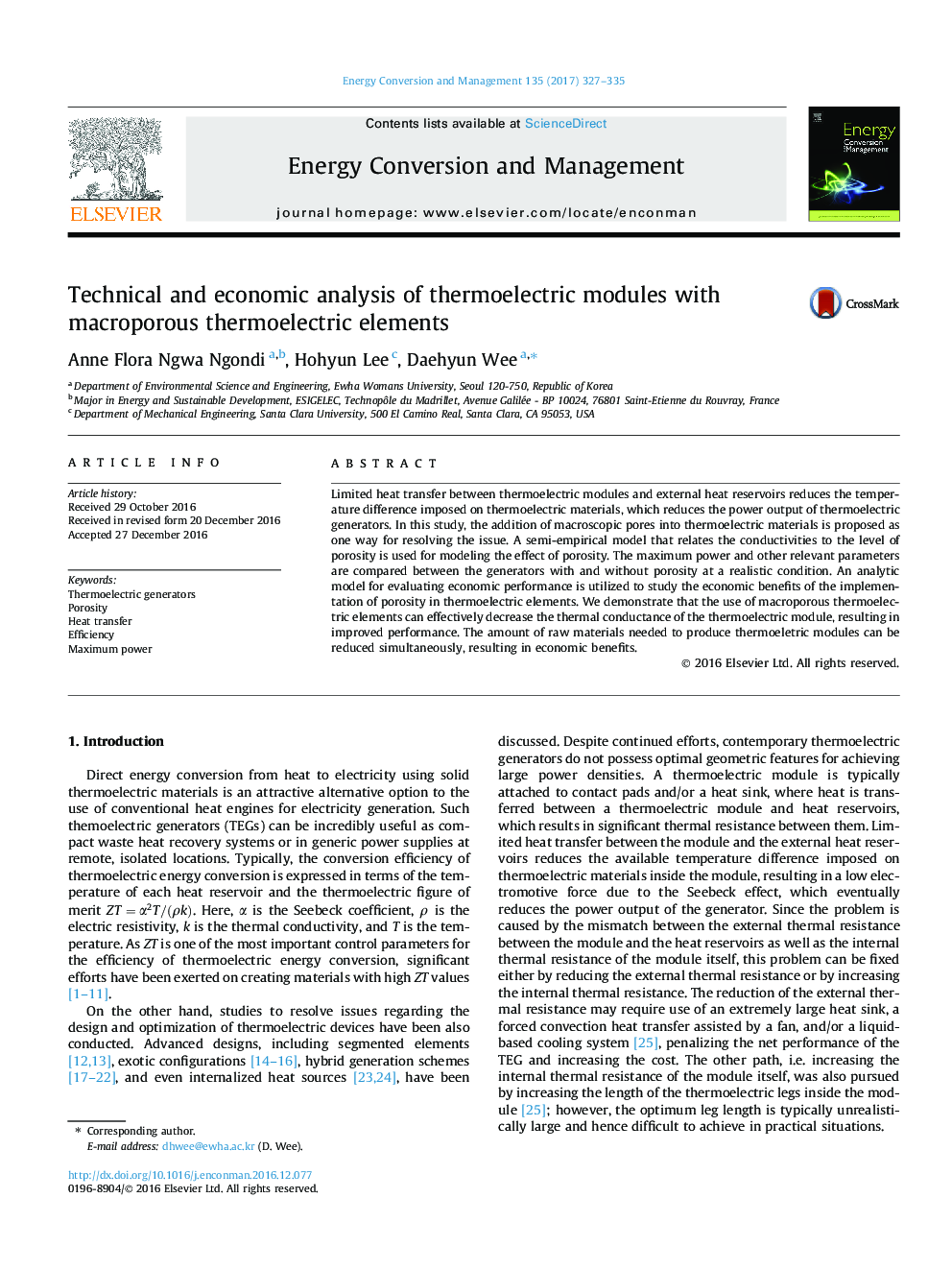| Article ID | Journal | Published Year | Pages | File Type |
|---|---|---|---|---|
| 5013237 | Energy Conversion and Management | 2017 | 9 Pages |
Abstract
Limited heat transfer between thermoelectric modules and external heat reservoirs reduces the temperature difference imposed on thermoelectric materials, which reduces the power output of thermoelectric generators. In this study, the addition of macroscopic pores into thermoelectric materials is proposed as one way for resolving the issue. A semi-empirical model that relates the conductivities to the level of porosity is used for modeling the effect of porosity. The maximum power and other relevant parameters are compared between the generators with and without porosity at a realistic condition. An analytic model for evaluating economic performance is utilized to study the economic benefits of the implementation of porosity in thermoelectric elements. We demonstrate that the use of macroporous thermoelectric elements can effectively decrease the thermal conductance of the thermoelectric module, resulting in improved performance. The amount of raw materials needed to produce thermoeletric modules can be reduced simultaneously, resulting in economic benefits.
Related Topics
Physical Sciences and Engineering
Energy
Energy (General)
Authors
Anne Flora Ngwa Ngondi, Hohyun Lee, Daehyun Wee,
